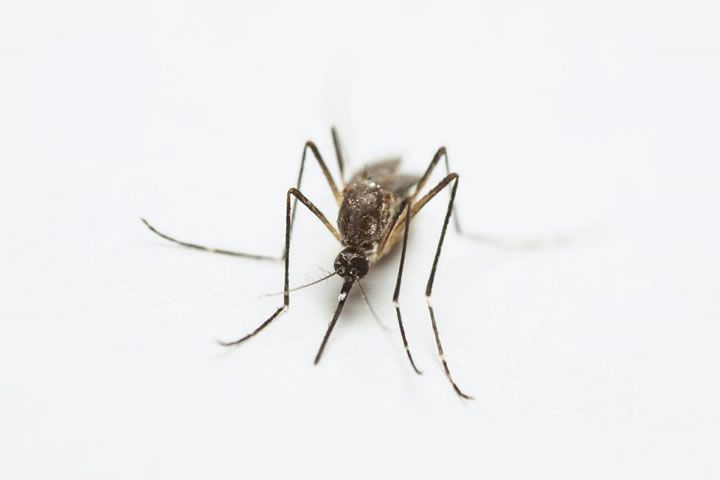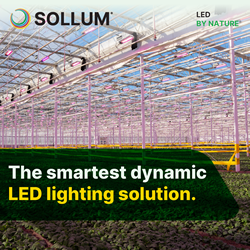With the 2025 mosquito season upon us, we believe it’s important to spotlight the risks these pests pose to human health and overall agricultural productivity. Their expanding habitat range, driven largely in part by climate change, makes it clear: awareness is critical.
 Not Your Average Ag Pest, Why Mosquitoes Deserve a Spot on the Radar
Not Your Average Ag Pest, Why Mosquitoes Deserve a Spot on the Radar

Grady Moore | Farmsense
When we talk about insect threats in agriculture, the mosquito isn’t usually top of mind. Unlike pests that directly damage crops, mosquitoes often go unnoticed in the agricultural conversation — yet their impact can be far-reaching, especially for commercial operations.
At FarmSense, we typically focus on insect species that cause direct harm to crops. But with the 2025 mosquito season upon us, we believe it’s just as important to spotlight the risks these pests pose to human health and overall agricultural productivity. Their expanding habitat range, driven largely in part by climate change, makes it clear: awareness is more critical than ever for what is the world’s deadliest animal.
By the Numbers: Mosquito Statistics You Should Know
To understand why mosquitoes matter in agriculture, consider these statistics:
- There are more than 3,700 types of mosquitoes worldwide (CDC).
- Over 1,000,000 people die each year from mosquito-borne diseases (AMCA).
- Dengue cases increased eightfold globally between 2000 and 2023 (CDC/WHO).
- In 2023, the U.S. saw local malaria cases in Florida and Texas — the first in 20 years (CDC).
- Mosquitoes cost the global economy more than $12 billion annually in healthcare and lost productivity (JMIR).
These figures paint a clear picture that mosquitoes aren’t just a nuisance — they’re a global health and economic concern.
Mosquito Risks in Crop-Based Agriculture
For farmers and commercial agriculture operators, mosquito threats show up in less visible but equally important ways. Diseases such as West Nile, Dengue, Zika, and Malaria don’t damage crops directly — but they do threaten the health of the people working in the fields.
Protecting workers is a top priority. However, when mosquito-borne illnesses make their way into farming communities, they can also disrupt workflows and reduce productivity. Fields that demand constant human attention — like citrus groves and rice paddies — are especially vulnerable due to their favorable mosquito habitats: shaded areas, standing water, and dense plant cover.
The Indirect Impact on Agricultural Ecosystems
Beyond direct human health concerns, mosquito management tactics can also affect the surrounding ecosystem. Broad-spectrum insecticide spraying, while often used to combat mosquitoes, can unintentionally harm pollinators like bees and butterflies — species responsible for fertilizing countless crops.
This disruption of beneficial insects can throw ecosystems out of balance. In some cases, it could even increase the intensity of pest outbreaks that are more difficult (and expensive) to manage later. Sustainability and precision in mosquito control aren’t just ideal — they’re another element of long-term agricultural success.
Best Practices: Five Ways Commercial Agricultural Operations Can Mitigate Mosquito Risk
Thankfully, there are smart, effective strategies to help reduce mosquito pressure in agricultural settings:
- Monitor standing water in retention pools, livestock water supplies, and catch basins. Also, drain standing water from gutters, irrigation ditches, bins, and other containers.
- Adjust irrigation schedules to prevent excess pooling.
- Promote natural mosquito predators like dragonflies and bats by maintaining habitat diversity.
- Use larvicides cautiously and only when necessary — targeted treatments reduce collateral damage to beneficial insects.
- Add protective infrastructure such as screens in packing facilities and shaded rest areas to shield workers.
While complete mosquito eradication is impossible, prevention is often the best form of protection — and in agriculture, every decision can make a measurable difference.
Enter FlightSensor: Real-Time Mosquito Monitoring
FarmSense’s multi-award-winning FlightSensor is transforming how growers and agricultural managers monitor for, detect, and respond to insect pest activity — mosquitoes included.
Using FarmSense’s digitized insect database, which is believed to be the largest in the world, along with their proprietary technology, their FlightSensor technology identifies and monitors a wide range of pest species in real time. This capability gives growers critical insight into insect populations around their operations, helping growers to:
- Pinpoint mosquito activity before it becomes a larger issue
- Optimize mosquito control timing to reduce unnecessary pesticide use
- Keep workers and nearby communities safer through earlier intervention
FarmSense’s FlightSensor isn’t just about pest detection — it’s about empowering growers with real-time, data-driven awareness to manage mosquito threats more effectively and sustainably.
Equally exciting is the fact that FlightSensor units aren’t just for agricultural operations. They can also be deployed in urban settings, which can provide governing bodies with information surrounding mosquito pressure within densely populated areas, enabling more accurate and timely public notifications of heavy mosquito activity.
The Takeaway | A Bite That Carries More Than an Itch
We often find ourselves simply brushing off a mosquito bite as we grumble under our breath — but behind that itch could be a threat to your health, your team, and your crops. With awareness, prevention, and real-time monitoring technology, we can all play a role in making mosquito season safer for everyone in — and out of — the field. In the world of agriculture, every bite counts — and the best harvests begin with a healthy team.
The content & opinions in this article are the author’s and do not necessarily represent the views of AgriTechTomorrow
Comments (0)
This post does not have any comments. Be the first to leave a comment below.
Featured Product

